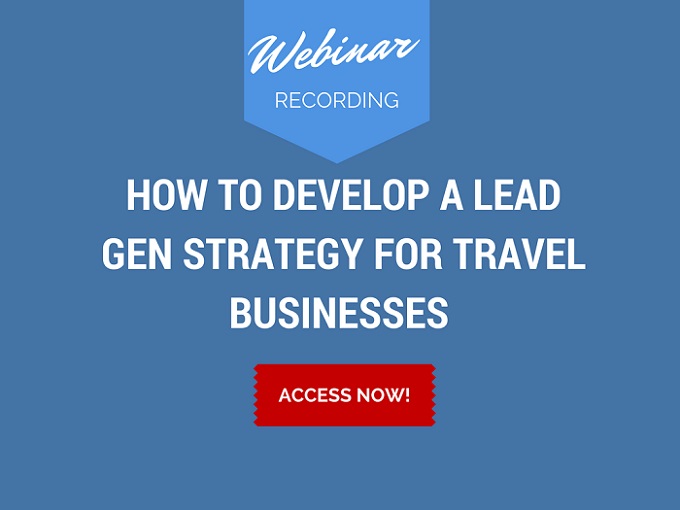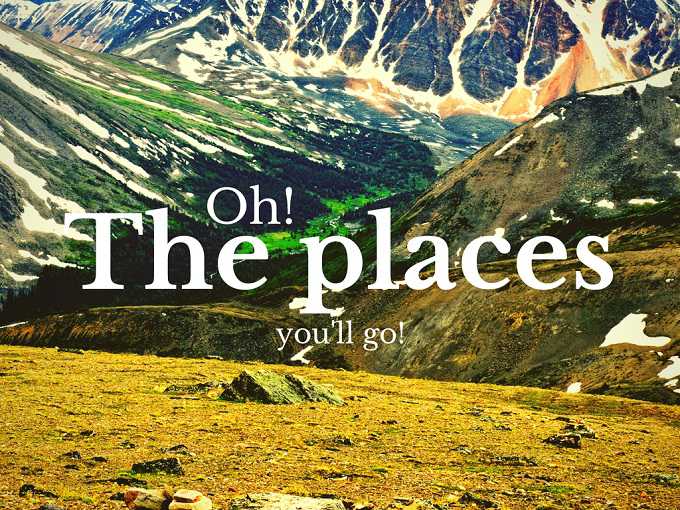Oh, the places you’ll go travel marketers, with just a tad bit of steering in the right direction. Travel is an experience – it is exotic and it is compelling. And, it’s way past time all you travel entrepreneurs and businesses realize how powerful is the thing you are trying to sell – dreams, adventures, memories – experience all in all.
All businesses are creating content – but travel businesses have the advantage of being the cool kid of the lot. You already have your stories laid out for you – you just need to package them in the right manner and on the right channels. So, today we’ll talk about content marketing ideas for travel businesses, and how travel marketers can use the power of compelling story-telling in their campaigns to stand out.
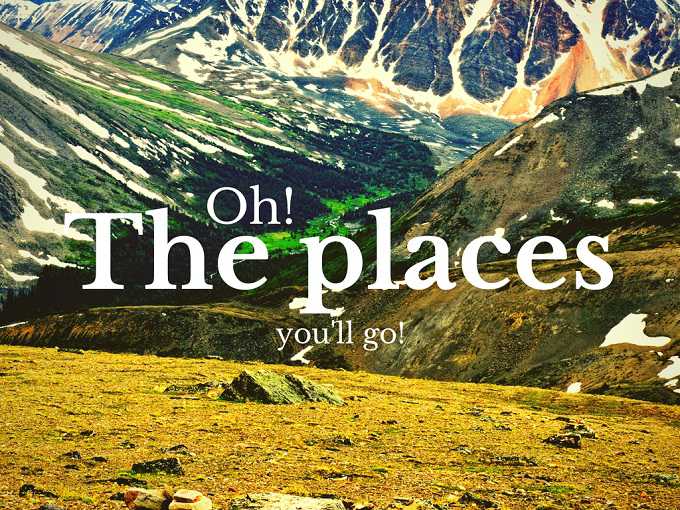
We are the first generation of both consumers and marketers seeing the gaps between human experience and technological advances bridge up close. And there is no industry better suited to use this to their advantage than travel and hospitality.
True, technology has given you the power of easy discoverability, with all the travel planners researching online for options before making a decision. But, on the downside, it has also given you far more competitors that ever. Now, unlike your times in physical offices, you have to compete with not just your neighboring travel agents, but with the bigger travel planning websites as well.
The competition is fierce – so what do you do to stand out?
Answer – Create better content than everyone else!
This answer may seem simple in theory, but is far more complex in execution. Therefore, this post.
Let’s Talk About the Travel Planning Paradigm Shift
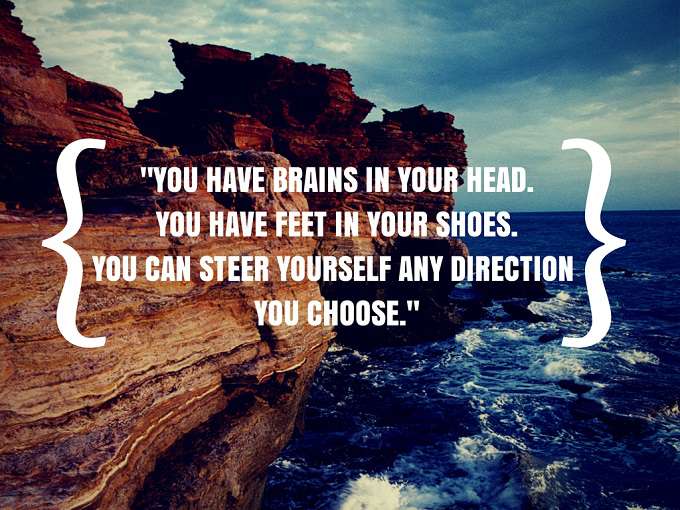
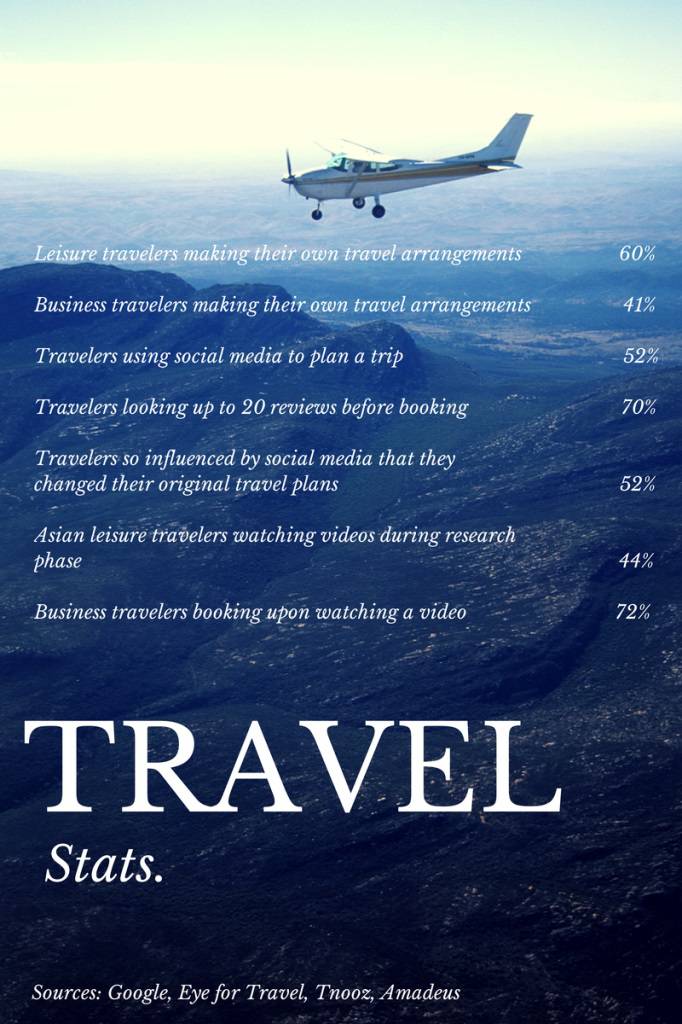
I have said this before; no longer are we in the age where booking a tour package meant finalizing a travel destination or a resort on that family friend’s recommendation, walking into the agent’s office, and bam. Travelers have options now – such great options.
And indeed, they can! The decision to travel might be taken in a moment of spontaneity, but the time between the decision and booking sees an enormous amount of research. Consider these stats for a moment:
And they are doing all of this online. They have a plethora of options to choose over you. It’s not only your 100 other competitors distracting them away, but the omnipresent Google’s curated content as well, with the best real estate on the search housing them – after all they do own the property.
In such a competitive ecosphere, how long would you survive with mediocre marketing? Or, you would survive, but would you triumph?
Where’s the solution?
The solution lies in having a consumer-focused mindset, and everything else stemming from there – create content, a lot of it, but while thinking from customer’s perspective.
1. Single out your Audience Before you Create the Content
A consumer-focused mindset begins with identifying to whom you are trying to sell. You would broadly have 2 kinds of target market, and you have to package the same aspiration differently for these 2 segments.
1. The first are the traditional ones traveling with their families.
2. The second are the millennials and Gen Xs raised on pieced up dreams of seeing faraway places, and nurturing wanderlust rooted deeper than the generations before.
Besides the two, you would also have different segments based on the budget brackets. This classification would depend on your own offering as well – maybe you cater only to the affluents, maybe only the budget travelers. The secret lies in creating content that would inspire your target audience.
People would say that this type of aspirational and emotional marketing is biased towards big brands, with big budgets backing them. No way! In fact, smaller startups are at an advantage, because they begin with a digital mindset, as opposed to their larger counterparts that have been doing traditional marketing for many decades.
Many smaller travel companies have used highly compelling, customer focused marketing to improve their revenue. No matter what line of travel business you are in – tour operators, hotels, travel curators, or whatnot, you have the power to tell compelling stories, which brings me to the focus of this article – story-telling in travel business.
2. Self-generated Content to Create Stories
If you have a business model where you or an employee (a guide) accompanies the travelers, you can very easily capture the “experience” as photos and videos and share it on your website and other social channels.
i) Photographs
Showcasing photographs of the destination taken while actually on tour, is one of the best content marketing ideas for travel businesses. WOW Club is one Indian company completely kicking ass at this. They have a very popular Facebook page, accounting to the interesting content that they share with their followers, and the fact that they share real experiences in the form of pictures. Their target audience (women travelling alone) seems to be completely taken by the idea, which is clear from the growing popularity of the company.
They of course have a “cool” factor aiding them as well (that it’s more a women travelers’ club than a regular travel company), which adds to their popularity, but there is no reason why fellow travel companies (especially smaller ones) cannot replicate their success.
This is what they are doing right:
a) Sharing travel postcards: They share tour photos or “postcards” on their Facebook page – which most probably are clicked by the WOW tour guide (also a woman) that travels with the group.
// (function(d, s, id) { var js, fjs = d.getElementsByTagName(s)[0]; if (d.getElementById(id)) return; js = d.createElement(s); js.id = id; js.src = “//connect.facebook.net/en_US/all.js#xfbml=1”; fjs.parentNode.insertBefore(js, fjs); }(document, ‘script’, ‘facebook-jssdk’)); //
b) Using real people’s photographs on website: Their website is also personalized with pictures from their travel groups. Of course, they cater to a smaller segment – women, in a higher income bracket, but they are doing it perfectly right for their audience. Their posts are exciting, personal, and aspirational for women who would one day want to travel alone – thus enticing others with a similar mindset to join in, expanding their audience size further.
ii) Videos
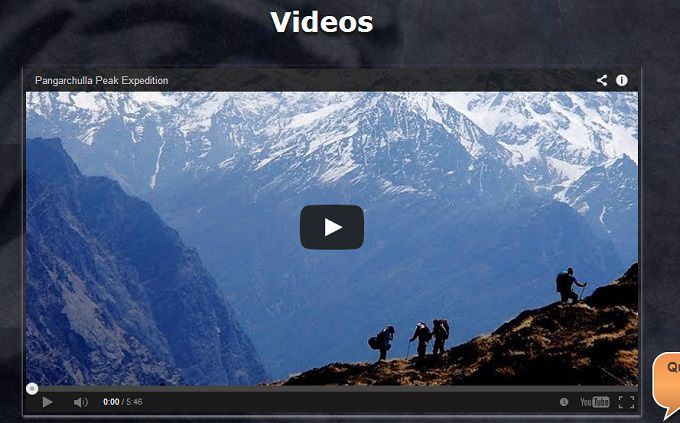
You can film some excerpts from the expedition and share them on their website. Many businesses are already doing that. GreatWideOpen, a travel company that connects travelers to local tour operators is an example. These videos show interviews with the travelers on the expedition, tour experts leading them on etc. People planning their trips can get an idea of how how the experience would be, and make a choice accordingly.
3. User Generated Content to Create Stories
i) Photographs/Videos
People that love to travel, love to document their journeys in the form of photographs/videos, and share them as well. You can ask the people who bought the package from you to share these experiences with you. You can then showcase them on your website (and social channels), along with their testimonials.
Channels other than website to capitalize this on
Social Media: Instagram and Pinterest are great for sharing this content in addition to travel business’ favored Facebook, even though they are just growing in India.
The best part – it’s not really a whole lot of extra work for your marketing team – you already have the content (or the users have it), you just need to promote them on the right channels (and that becomes easier with this exhaustive checklist for content promotion). There’s more about Instagram and Pinterest as photo-content channels later in the post.
ii) Testimonials and Reviews
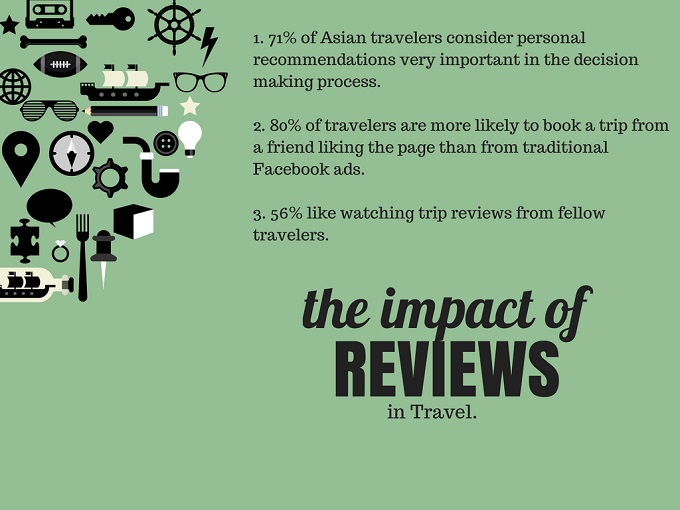
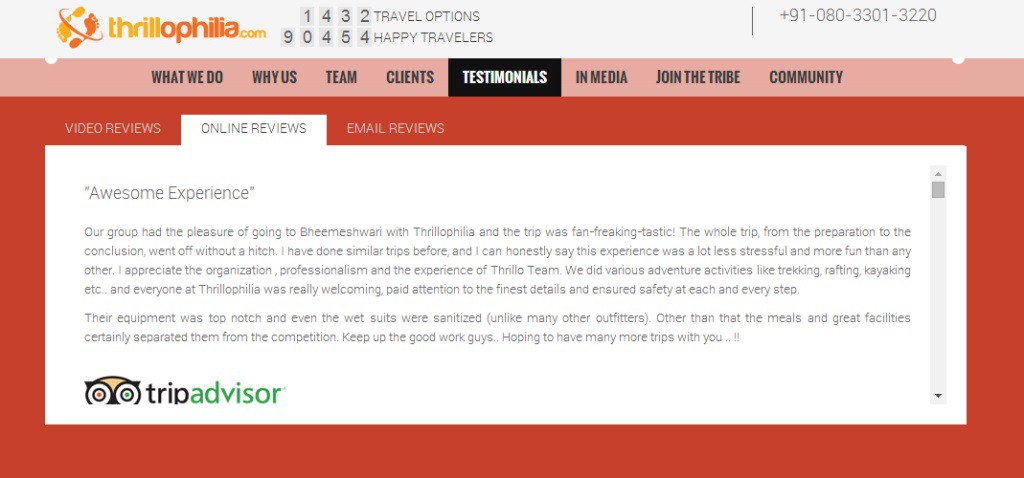
Before people take a trip, they want to make sure of what kind of experience they can expect at a particular destination. Photographs and testimonials from fellow travelers affect their travel plans quite a bit because of this. Consider these stats:
Reviews on TripAdvisor and Google Reviews are especially helpful for you as Google pulls them in organic search results as well. Bangalore based activity and travel curation company, Thrillophilia is doing that right. They have TripAdvisor reviews embedded on their site, in addition to video and email reviews.
iii) Contests
If you have a decent social following, one of the best content marketing ideas for travel is a contest. You can ask your followers to share photos, and their experiences with your service. Not only is it a great way to source user generated content and engagement, but it can be used as social proof as well. Channels you can run it on:
a) Facebook
AirBNB (a network of accommodations offered by locals) ran a contest on Facebook, called Destination Honeymoon.
Aim
To increase their brand awareness and drive traffic to their website.
What needed to be done
Couples had to share their photographs with AirBNB’s Facebook page and answer a few questions; the ones selected by a panel based on their answers to the questions, and general likes by Facebook users would win a dream honeymoon package.
Outcome
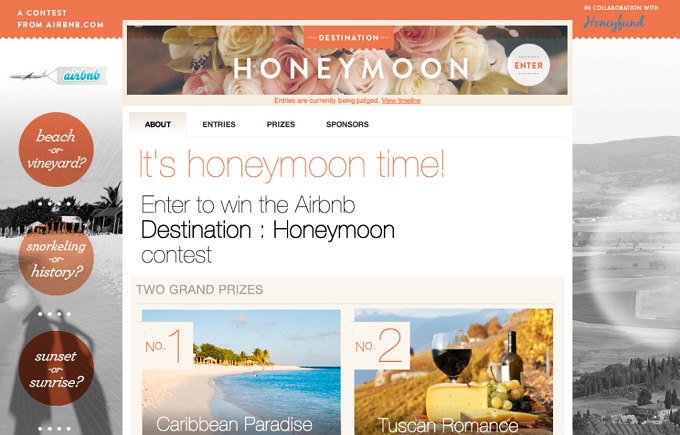
The campaign was successful, and drove engagement in the form of 10, 299 votes (Source: Strutta). Here’s how the contest looked:
b) Instagram
This is a platform where you market for discovery. Instagrammers are the ones that would actually engage with your photo-contests, therefore you need to have a presence and a decent following there yourself, before you can run contests.
c) Pinterest
People that create travel wishlists, dream destination bucket lists etc. are on Pinterest, and so are travel bloggers. Beautiful user generated and your own photographs would do wonders here.
How would this help?
The people repinning or following you might not buy from you, but would definitely spread word about you, and be your brand ambassadors, as long as you keep sharing interesting swoon-worthy content.
Example Campaign
Hotel deals website JetSetter once ran an awesome campaign on Pinterest “Pin it to win it.”
Aim To improve traffic to the website and increase stickiness.
What needed to be done
People were invited to create “The ultimate destination pinboard”, across several categories, like escape, adventure etc, with relevant pictures. The winners would get to be JetSetter Curators, meaning they would be sent to dream destinations under the category of their choosing.
Outcome
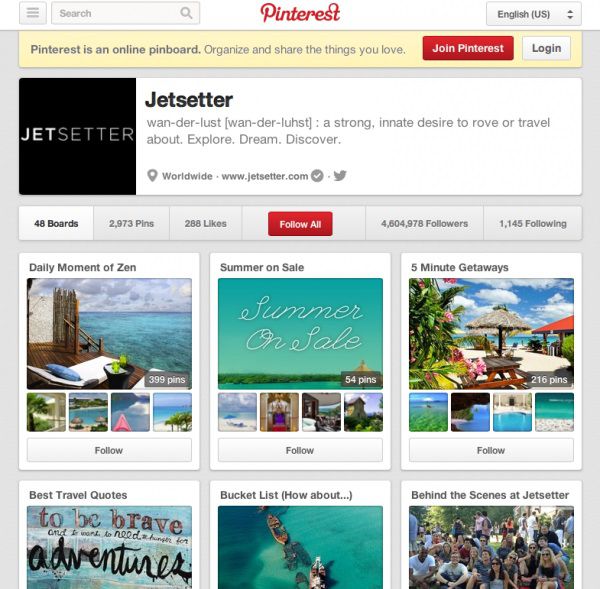
During the campaign, the pageviews on JetSetter increased 150%, the referral traffic via Pinterest increased 100%, and the bounce rate decreased by 10-15%. (Source: Mashable)
Yes, Pinterest is not yet enormously famous in India, but it is decently famous in the your business category, so you might want to try it out.
4. Influencer Strategy
If you talk about famous travel bloggers, photo-bloggers and the likes on your own blogs, it would gain the attention of not just these influencers and their followers, but virtual tourists as well (people searching for travel related content on the web).
There is a strong possibility of these 3rd category of people to become your customers, if your content entices them enough. Many of the influencers’ followers would fall in this category as well.
Hotel Trident’s #tridentsocialhotel Campaign to Engage Influencers via Twitter
Hotel Trident, Hyderabad ran a 2-day campaign (last year, December) encompassing Twitter + Facebook + Instagram + FourSquare, and 2 travel bloggers battling it out across several challenges. Even food orders were taken via Twitter.
It created quite a buzz, with the engagement happening among Hotel Trident, their followers, the bloggers and the bloggers’ followers with the hashtag #tridentsocialhotel. And, that wasn’t a one-time campaign; Hotel Trident ran the same campaign in one of its Mumbai Hotels early this year, and trended nationally for it, and created quite a bit of engagement once again.
This “Case Study” would tell you what they did:
Learning from the mistakes
And, they did turn out to be pretty good social listeners as well. During their December campaign, they had shared the bloggers’ room numbers via Twitter as well. It was pointed out to them publicly that it invades privacy; they implemented the learning in the March campaign, by DMing this kind of private information, instead of tweeting it.
The campaigns not just created a lot of engagement but got them new followers as well. You can find out more about the campaign here.
5. Blog Strategy
This is an extension of both your self-generated and user-generated content. Thrillophilia have been doing an awesome job at creating content on their blog. Of course, with the exercise they have built a good community of brand advocates as well.
Not only do they generate awesome content on their blog, with exciting topics like “21 Best Backpacking trips in India to add to your bucket list”, that have enormous sharability, but interview travelers and source guest posts as well.
Lead Capture Content on Blog
Everything we have discussed thus far were discoverability and engagement campaigns to a large extent. However, after driving traffic to your site, you have to try and capture the lead details as well, especially if the visitors are not immediate buyers. The first offer that you see on Thrillophilia’s blog is a “Travel Guide” in exchange for your email address and name (they subscribe you to the blog in exchange for these basic details).
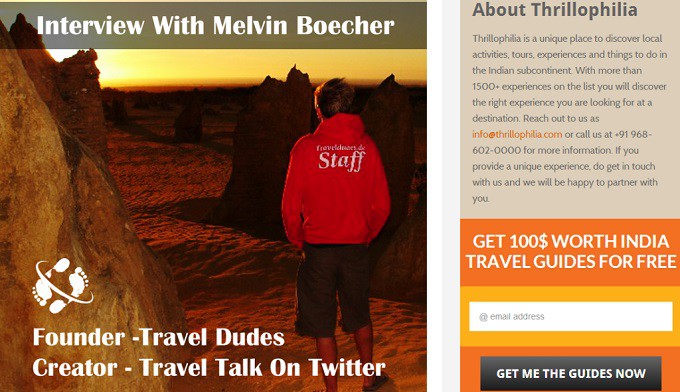
This is a pretty good strategy, because the casual virtual tourists that would land on a post might subscribe to this, and the next time they are planning their trip, or an activity, Thrillophilia would be in their inboxes and on their minds.
6. Use Email Wisely
Email has been every smart direct marketer’s choice of communication for a very long time, and still remains so even with the advent of social media and other fancier content marketing channels. This is not without a reason. Email gives you the power to communicate one-on-one with your prospects, and you should not let this opportunity slide.
You can combine the power of technology and story-telling to create highly customized emails and strike a real chord with the prospect. See how Etihad Airways has used it.
Etihad Airways pre-flight upgrade email
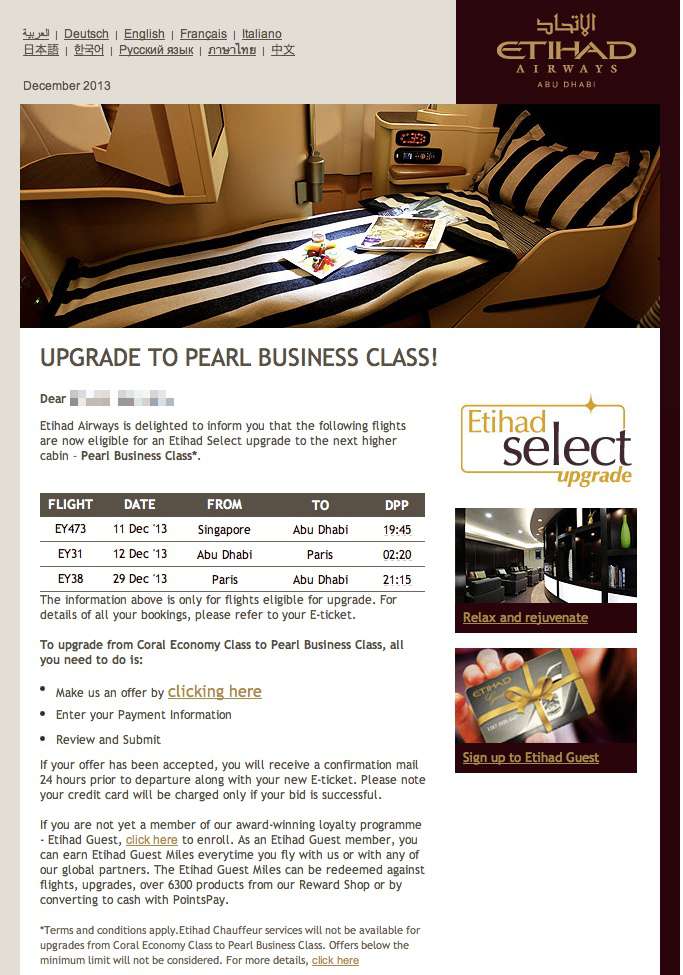
Now the email goes out to customers that are travelling long distance and travelling solo (so it is highly customized offer).
Travel marketers can use this in a very efficient manner. For instance, if someone booked a 2 adults and 2 children tour with you last year, it would not make sense for you to send them a solo or couples only adventure tour this year. Send them family offers instead.
7. Content’s Best Friend – Mobile-friendliness
People do most of their travel search on mobile, and if your website (where most of your own content is housed) is not responsive, you are not just losing immediate bookings, but you are losing credibility in their eyes for future bookings and recommendations as well.
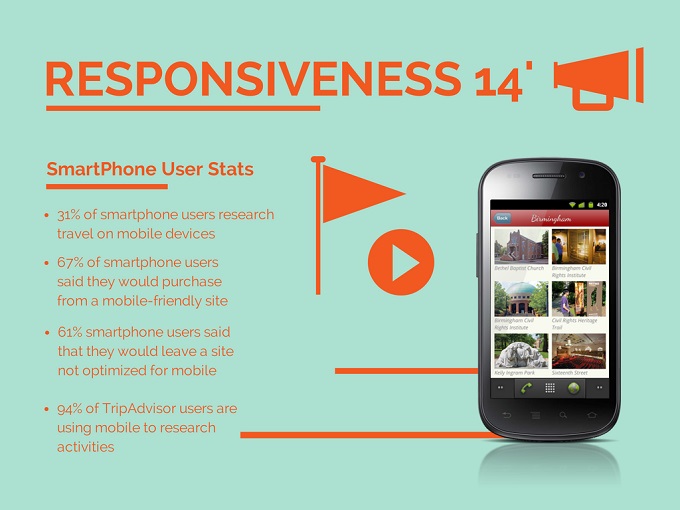
Consider these stats:
That’s way too many people looking for information on mobile, you do not want to miss out on them.
8. Never be Tempted into Taking the Easy Road – Content Spinning
Let’s face it, you have one thing to sell – the place (and the experience associated with it). You have 100 other competitors trying to sell the same place, a similar projection of experience, and not enough bandwidth to create content that is unique and enormously appealing.

You might, in these cases, be tempted to take the easy path – of taking content that already exists on the web, and spin it around to place it on your website. I have only one advice for you – refrain! This may seem like the easy option, and might even work for some time, but Google’s junk finders are getting smarter by the minute, and you don’t want to be in its path when the wrath unleashes the next time.
9. Be Data-driven While Creating a Content Strategy
This should be the very first point in any marketing strategy, but there’s a reason why I have kept it almost at last. I would use a Hitchhiker’s Guide reference, because this post is about travel, and because Hitchhiker’s is awesome.
“The Answer to the Great Question… Of Life, the Universe and Everything… Is… Forty-two,’ said Deep Thought, with infinite majesty and calm.” “Forty-two!” yelled Loonquawl. “Is that all you’ve got to show for seven and a half million years’ work?”
“I checked it very thoroughly,” said the computer, “and that quite definitely is the answer. I think the problem, to be quite honest with you, is that you’ve never actually known what the question is.”
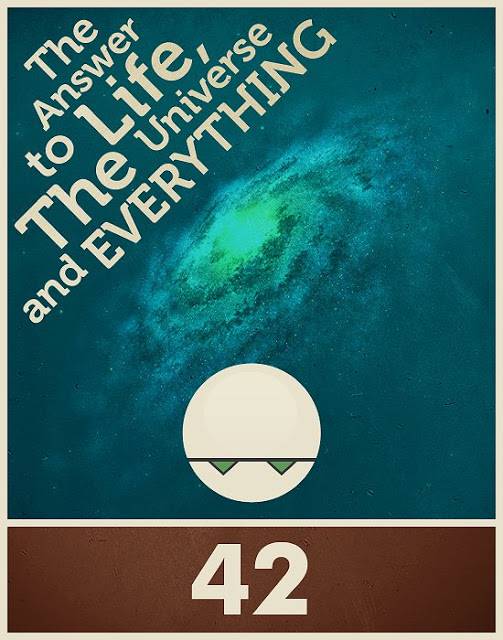
Those that have read the book, would know what I am trying to reference. For others, according to “The Hitchhiker’s Guide to the Galaxy”, the ultimate answer (to life, and universe and everything) is 42. The problem with the answer is that nobody quite knew (or knows) the question.
You can have all the metrics at your disposal, but you have to really know what it is you are trying to measure to make sense of the data.
You have to decide what your goal is – with any strategy. You have to be sure of what you want to do with your content – improve conversions, improve engagement, reduce bounce rates etc.
I quoted this point last, just to drive home the fact that just because all of these campaigns worked in case of the quoted examples, doesn’t mean it would work for you too – so define goals, run campaigns, create content – measure. Change strategy if it doesn’t give you ROI.
10. Prepare to handle the Negative Impact of Easy Technology
a) First, try to provide the best experience
Super-connected travelers might really boost your reputation by giving you awesome reviews, but sometimes, things might turn the other way round as well. You cannot have dirty bed-sheets and expect that they would not tweet about that, if they can tweet about an awesome cocktail you served the last time they were here. People can be ruthless, and if they pay for an experience, they will not compromise.
b) If you do mess up, take responsibility, and make it right
In service industry, goof-ups happen; somethings are bound to go wrong, people are bound to get pissed off, but you cannot just ignore a negative feedback, and delete it off the website.
You can do that on your own properties, but not on rented properties, like TripAdvisor, Google reviews and the likes. Not only would your reputation take a hit, if you do that (nothing can be swept under the rug, when people are so incredibly connected socially), but you would see the impact in the search rankings etc. as well, with Google now taking a head first plunge into the travel search industry as well. They display reviews from all of these external websites, and they would show up. You cannot hide them.
c) Monitor and Listen
Instead, what you need to do is keep listening; have your social mention monitoring set up using any of the tools like HootSuite, Mention etc. and listen for what people are talking about you.
d) Have an Appeasement Plan
If something backfires, have a compensatory back-up plan; appease agitated people with something like a complimentary travel kit (depending on the enormity of goof-up), and they would at least have the satisfaction that you are listening, and not ignoring customer grievances.
So, that’s it!
These were a few content marketing ideas for travel and tour businesses to create engagement, traffic, and new sales leads. What are your strategies – are you using content?
